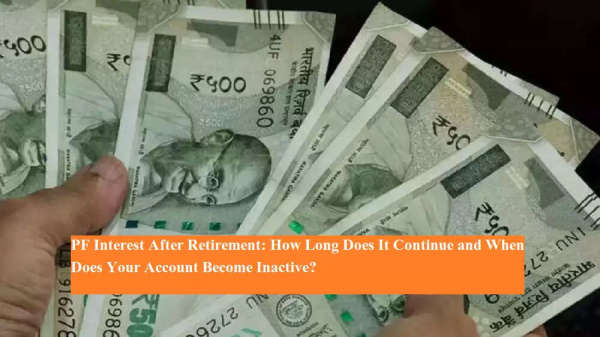

Many salaried employees in India rely on the Employees’ Provident Fund (EPF) as a key retirement savings tool. Managed by the Employees’ Provident Fund Organisation (EPFO), this fund allows workers to accumulate a sizable corpus over the years. However, one common question that arises after retirement is: What happens to the interest on your PF account if you don’t withdraw it immediately? Let’s break down the rules, timelines, and important details every retiree must know.
Does PF Earn Interest After Retirement?Yes, your PF account continues to earn interest even after retirement. However, this benefit is not indefinite. According to EPFO rules, the account earns interest for up to three years after retirement, provided you don’t withdraw the money.
So, if you choose to leave your corpus untouched in the PF account post-retirement, you will keep receiving interest credits for three years. After this period, the interest stops, and the account status changes.
What Happens After Three Years?Once three years have passed since your retirement, your PF account is marked as inactive or dormant. This means:
You will no longer earn interest on your balance.
However, your PF money does not lapse or get forfeited.
The accumulated amount remains safe with EPFO until you withdraw it.
EPFO clearly advises members not to delay withdrawals unnecessarily. To ensure you don’t lose out on interest income, it’s recommended that retirees withdraw their PF balance within the three-year period.
What Does “Inactive PF Account” Mean?An inactive account essentially means that the account has stopped generating returns. While the money is secure, the absence of interest growth reduces the value of your savings over time, especially when inflation is factored in. For this reason, retirees are encouraged to claim their PF funds without unnecessary delay.
How to Claim Your PF After RetirementEPFO provides both online and offline methods for withdrawal. Here’s a step-by-step guide:
Online Withdrawal Process:
Visit the EPFO member portal.
Log in using your UAN (Universal Account Number) and password.
Ensure that your KYC details (Aadhaar, PAN, and bank account) are updated.
Go to the Online Services section.
Click on Claim (Form-31, 19, 10C).
Verify your bank account details.
Select the reason for EPF withdrawal.
Authenticate the request via OTP sent to your registered mobile number.
Submit the claim. The funds are usually credited to your bank account within a few working days.
Offline Withdrawal Process:
Visit the nearest EPFO office.
Fill out the required forms (Form-19, Form-10C, or Form-31, depending on your claim type).
Attach the necessary documents, including identity proof, bank details, and proof of retirement.
Submit the documents at the counter. After verification, the funds are released to your bank account.
Loss of interest: After three years, you stop earning interest on your hard-earned savings.
Inflation impact: Idle funds lose value over time if not invested elsewhere.
Liquidity: Having your retirement corpus accessible allows you to plan better for medical emergencies, travel, or other financial needs.
PF accounts earn interest only for three years after retirement.
After three years, the account becomes inactive, and interest payments stop.
The balance, however, remains safe until withdrawn.
Retirees should ideally claim their funds within three years to maximize returns.
Withdrawal is simple and can be done online through the EPFO portal or offline via the nearest EPFO office.
Your PF savings are a vital part of your retirement planning. While the EPFO ensures that your money remains safe even if left untouched, delaying withdrawals comes at the cost of lost interest income. To make the most of your retirement corpus, plan your withdrawals wisely and ensure that your funds are either utilized or reinvested for better growth.